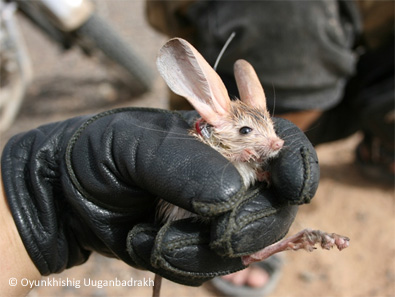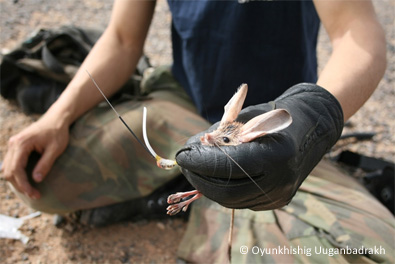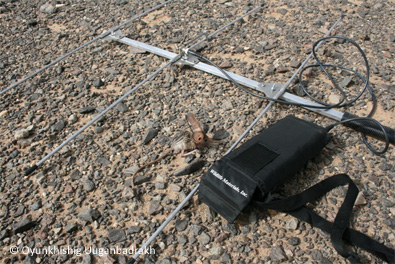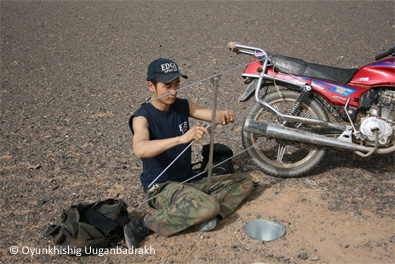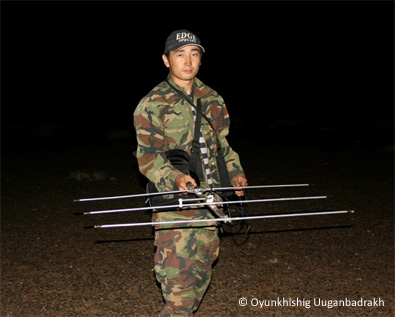EDGE Fellow Uuganbadrakh, who is researching the long-eared jerboa in Mongolia’s Gobi desert, tells us here about using radio telemetry to track these little creatures.
Hello, Dear blog readers.
I’d like to apologize from all readers to didn’t write blog long time. This time I am going to notify about radio telemetry. Nowadays it is impossible to imagine wild life research without radio telemetry method. I’m grateful to EDGE programme for giving the opportunity to study Mongolian endangered animals using advanced technique.
Radio telemetry research was based method of physical science. It is used to define home range, behavior and ecology of wildlife. Radio telemetry equipment contains of transmitter, cable, antenna and receiver. Transmitters consist of an antenna, a power source and a transmitter unit. I need very small radio telemetry collar /transmitter/ because my study objective is very small. If you want to do more detail research, you need to buy good equipment by expensive cost. If collar was included many technology and smaller, it is more expensive and shorter life from ordinal transmitter. To choose transmitter, following things are very important. First is transmitter weight. Transmitter haven’t to exceed 5 percent of studying animal. Second is battery life and my transmitter battery life is one month.
I think I am a first young man who used radio telemetry equipment to study Gobi desert small mammal in Mongolia. So sometimes I used to have any problem to related radio telemetry research, but I haven’t got any relationship, telling about it. This moment my good advisor is both internet and book. In my opinion any researcher can use any book and online to find any solution what don’t understand. My antenna is yagi. During find main objective, when I hang antenna by long time, sometimes my hand is numbed. But it is no problem.
As for receiver, it is middle sized and quality receiver. It is included 14 channels. Some good receiver has until 999 channels. Catching signal well is very important for choose receiver.
One of our main aims is to define home range of long eared jerboa. By described home range of long eared jerboa, it will be influenced habitat conservation of long eared jerboa positively. When we find long-eared jerboa, we happened some problems. For example it is quite difficult to catch signal of neck transmitter by antenna when long eared jerboa is hiding behind the tall bush. In this case, it could be catch the signal to travel a lot. Another problem is long eared jerboa’s fast moving. Jerboa always is moving.
Next I will introduce some result. Thank you for your attention.
Sincerely
Uuganbadrakh.O Mongolian EDGE fellow
If you would like to support the research and conservation work of EDGE Fellows such as Uuganbadrakh, then please become an EDGE Champion, or donate here.
